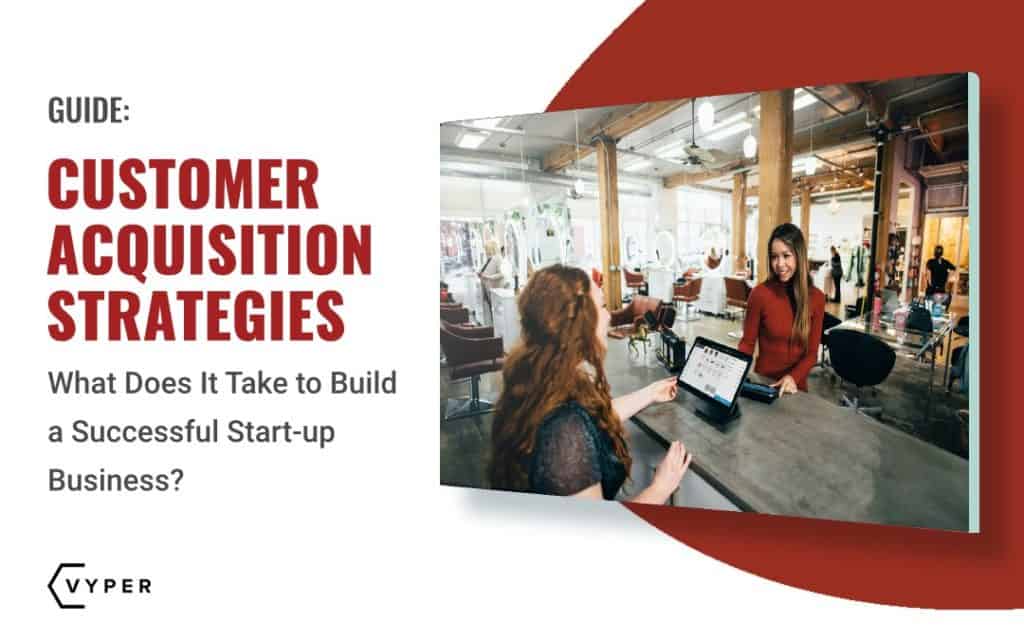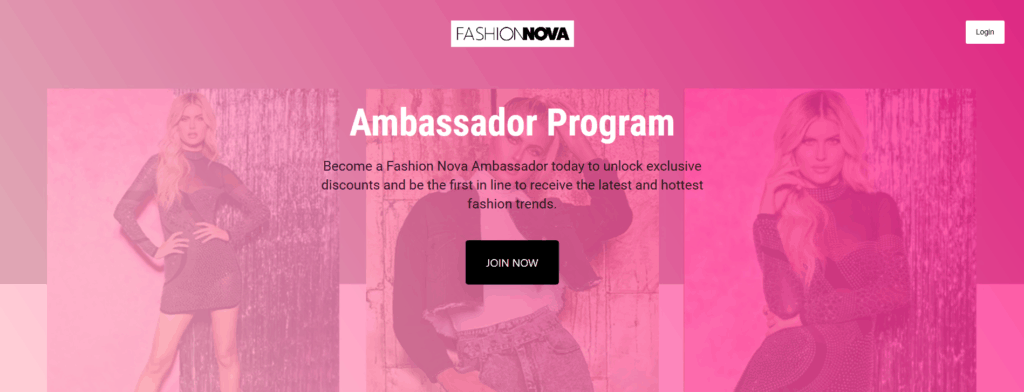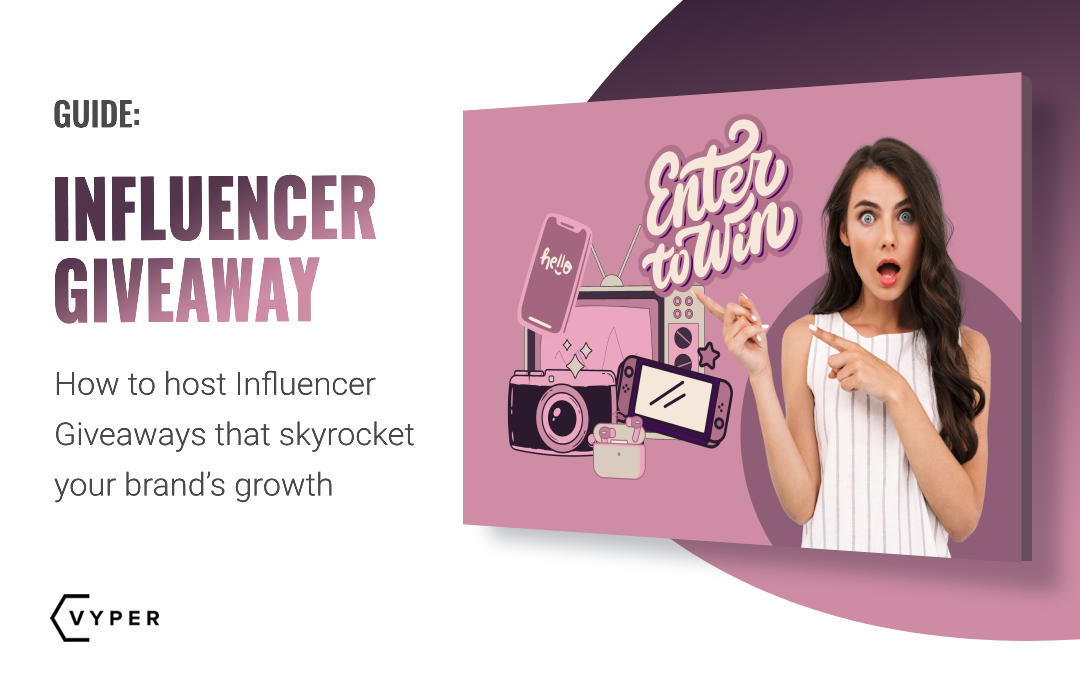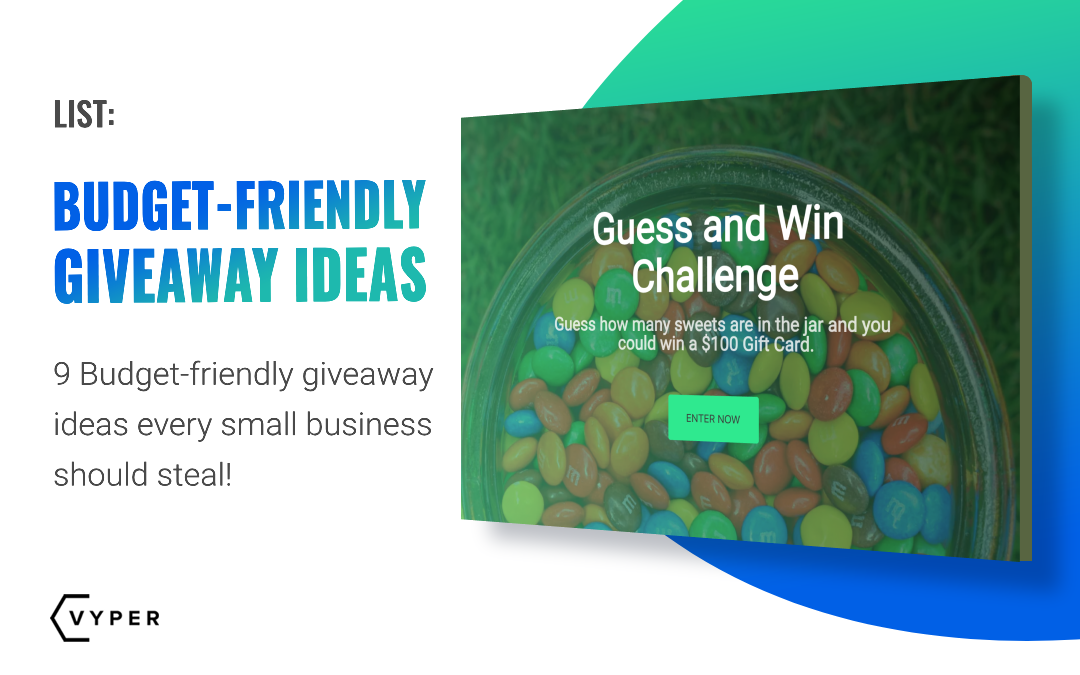What does it take to build a successful start-up business?
Most business gurus say you need to have passion and drive. Wake up at 5 am and work harder than everyone else; create real relationships with your audience! Show up and do the work every day.
Motivational? Sure.
Helpful? Not so much.
What do all these bits of advice have in common?
They don’t actually tell you how to build a successful business.
The truth is, you really only need one thing to build a successful business—customers.

FREE DOWNLOAD 👉 The Facebook Ads Asset Library! All the checklists and guides used to profitably spend $150M+ on Facebook & Google ads.
Kevin and Jack discuss the challenges they faced when VYPER was still in its early phase of development.
Tune in to the podcast above to find out more.
Without customers, you are just wasting your time.
The issue is, you’re not the only business in town. In fact, with more than 342 million websites in the world, you are probably one of a dozen companies offering the same or very similar products or services.
Standing out as a startup is hard — but it isn’t impossible.
Acquiring customers and leads require boots-on-the-ground work to build a brand and draw in customers.
So, how do you do it? Here are seven customer acquisition strategies to take your start-up from just another name online to a thriving business with a healthy bottom line.
Book Podcast Interviews
Podcasts are a big deal right now. In fact, more than half of the US population has listened to a podcast.
One of the major benefits to podcasts is that you can listen to them anywhere — in a car, on a train, even while doing your grocery shopping.
There are thousands of podcasts on every topic you can imagine, from murder mystery to heavy metal music to knitting.
If you’ve got an audience, there’s a good chance close to half of them listen to podcasts.
There are two ways to approach a start-up podcasting strategy— you can start your own podcast and book high-profile guests to jumpstart brand awareness.
People love to share their own work, so most guests will share any interviews they do across their social platforms.
This gives you access to their social traffic and promotes your brand to a wider audience:
Awesome, but once you have decided to start a podcast, it can be overwhelming considering all the different podcast hosting providers and equipment setups.
Alternatively, you can go the other way and get yourself booked as an interviewee on popular podcasts. Again, you will get access to a wider audience base and get the opportunity to talk about what you do.
Keep in mind; you need to have something interesting to share. Don’t expect to be able to talk about your awesome new start-up for 30 minutes (if that is what you want to do, then you need to focus on paid ads).
Instead, offer value. Share insights. Start conversations.
To get booked as a podcast guest, your first step is to determine which podcasts make sense for your brand and expertise.
If you are a marketing expert, then look for marketing podcasts. If you are selling a brand new line of organic lip balm, then try environmental or beauty podcasts.
Remember, you want a wider audience but still a targeted audience. It doesn’t make sense to go on a car podcast if you write children’s books, for example. (Unless it’s a children’s book about cars, then go for it!)
The infographic below from HUSTLR is a comprehensive guide for those looking to start a podcast.

Use Guest Posts to Get Your Brand Name Out There
Here’s the thing: Nothing in life (or business) is free. You can expect to pay with either time or money.
When money is in short supply, you need to focus on areas where investing a bit of time can help market your business.
And that is where guest blogging comes in.
Note that it doesn’t matter whether you’ve started your own blog yet. You can guest post with or without your own blog.
By investing time in creating a truly useful piece of content for a blog related to your industry, you can gain exposure and possibly links.
Despite Matt Cutts long-ago declaration, guest posting is still not dead.
According to SEO experts at Loganix, “Guest posting is a white hat link building method that has been around for years and remains one of the most valuable ways to build safe, high quality, contextual links back to your site.”
Spammy, crummy guest posting is definitely dead, but offering value is always in style!
So, how do you do it well?
It starts by finding industry blogs. Say, for example, you built a social media marketing tool. Start with Google and look for “social media blogs.”
Select a half dozen of those blogs and take the time to read them. See if their style fits your brand.
Then, look for a “write for us” or “guest submission” page. It is often in the top navbar or in the site footer.
On Social Media Today, for example, their Write for Us is right there in the navigation bar.
You can also use the site search in Google by typing site: https://www.example.com write for us (Replace the example URL with whatever site you are searching, of course.
Once you find the site’s submission page, read the rules, and follow their instructions. You might need to pitch a topic or write the entire article and submit for review.
Use Dedicated Landing Pages for Different Target Markets
When you sign up for an email list, most websites will ask for your first name. This is because personalized emails that use the person’s name earn 20% higher open rates.
What does that have to do with landing pages?
It shows that people like content that speaks directly to them.
If you are looking for a dog collar, you are more likely to click on a link specifically about dog collars than a more general pet store link, right?
Creating multiple landing points that address the unique struggles different audiences face has the same impact.
See below how Lyfe Accounting uses two different landing pages that each focus on separate needs for a similar target market: Landing page dedicated to small business tax preparation:
Now, compare that to their similar landing page for small business CPA services:
As you can see, both of these landing pages are targeting small businesses. However, one landing page is focused exclusively on their tax preparation service while the other is focused on accounting services.
If you follow this example and get ultra-specific with your landing page and who you’re targeting, you’re bound to increase your conversions.
Let’s look at another example.
Software company HousecallPro offers business service software designed to help home service companies provide better customer service and book more jobs. Their solution is used by companies that offer a huge range of services from HVAC repair to home cleaning and electrical and plumbing service.
But a cleaning business is going to have far different needs than, say a plumbing company, right? Which is why they created dedicated landing pages for each type of business they serve.
The plumbing page includes reviews from plumbers, icons detailing how the software specifically helps plumbing companies, and even a video of a plumber explaining how the software helped them run a more profitable business.
When it comes to customer acquisition, web personalization wins every time.
Be sure to check out these tips for landing page best practices when you start building your own to ensure it’s a success from day one.
Create an “Ultimate Guide”
Content might be King, but boring, generic content isn’t going to cut it.
Instead of creating dull lists and covering the same topics as every other brand in your vertical, work to create memorable, amazing content that positions your brand as an industry leader.
“Ultimate” guides cover every angle of a topic, from how to get started on how to specific strategies that readers can put to work right now.
If possible, create a guide that covers a specific market, not the entire industry.
For example, Curata created an Ultimate Guide to Creating Online Content Marketing Courses.
There are dozens of ultimate guides for creating online courses, but this one is specifically about creating content marketing courses. This allows them to address issues related to content marketing strategy directly.
Make sure your guide is user-friendly and breaks down the topic into multiple subtopics like this guide to short term business loans from finance company Lendio.
Each title in the left sidebar is also a hyperlink that jumps to that topic in the guide, which makes this resource incredibly easy to look through.
Sounds good, right?
But creating radically good content is also extremely time-consuming.
We are back to the old “time or money thing” again.
The video above has more insight into creating online courses. If you need more info, you can visit Hyax for a step-by-step guide to creating online courses.
If time isn’t on your side, consider hiring a writing service to create the content for you. Just be sure to choose a high-quality service that won’t turn over rehashed listicles you can find on a dozen other sites.
This chart breaks down the most popular writing services based on the cost, level of plagiarism, and even accuracy.
When it comes to writing, you get what you pay for.
Smaller, more niche content companies are more likely to offer higher quality content because they understand the industry they serve better.
Incorporate Video into Your Marketing Plan
Back in 2005, when YouTube was founded, it was hard to imagine how popular online videos would be nearly 15 years later.
According to WordStream, 45% of people report watching more than an hour of videos on sites like Facebook and Twitter every week.
In fact, each month, people upload more video content online than all the major US networks have created in the past 30 years.
Video is incredibly popular and very easy to create on a limited budget. With little more than an iPhone and a video editing app, you can create high-quality video content that educates, informs, and (most importantly) converts. All of this content can be hosted for free once you make a Youtube channel for your business.
So, where can you leverage video content? On nearly every platform online.
For example:
- Create a how-to video and upload it to YouTube
- Host a Q&A session on Instagram Live to answer user’s questions
- Interview a popular industry figure on Facebook Live
- Record testimonials and use them as social proof when building your new website
- Create a stop-animation film that tells the story of your brand or a customer’s success
When it comes to videos, the possibilities are endless—, and the results are powerful.
Consider a Referral Program
What is the most effective form of marketing? SEO, social media, paid ads, maybe?
Nope.
The most effective form of marketing is, and always has been, word of mouth.

Word of mouth is still one of the most crucial customer acquisition strategies out there. According to GetVOIP’s customer service statistics, over 72% of customers are willing to share a positive experience they had with a brand with 6 or more people!
Think about the last time you purchased a new product. If it was a car, you likely asked your car friends what they thought, right? If you needed a bouncer for your baby, you asked your mom friends.
Why? Because we are far more likely to trust people who aren’t trying to sell us anything.
Referral programs are like word of mouth marketing on steroids. They turn each satisfied customer into a brand ambassador who is willing to share your product with their friends.
Take Rothy’s, a company that offers cute flats and sneakers that are washable and made from recycled plastic bottles. It is a pretty niche market, but they managed to go mainstream with the “refer-a-friend” program.
It is pretty simple: the customer shares a unique link that gives their friend $20 off their first pair of Rothy’s and gives the referer $20 towards their next pair of Rothy’s.
It’s a win-win scenario that inspired dozens of reviews, like this one, from fashion bloggers, business brands, and even environmental brands.
For the less coding savvy, there are plenty of referral marketing tools that make creating your own program pretty painless. You can use a simple widget or a full-featured platform to build your very own referral program.
Dig Into Paid Marketing
Most of the strategies above rely on your start-up having access to more time than money. That is the reality for most start-ups, after all.
But there is a good chance you do have at least a modest marketing budget.
If that is the case, you absolutely considering including paid campaigns in your marketing strategy.
But, which ones?
From PPC to social media to podcast ads, there is an overwhelming number of ways to waste your money on paid ads.
You want results, right?
Retargeting is the way to go. As the name suggests, retargeting targets people who have already interacted with your brand in some way.
Maybe they liked your Facebook page, followed you on Twitter, or visited your website.
Using retargeting, you can show them ads for the exact item (or service) they were looking at.
It might seem a bit creepy, but here’s the thing— retargeting is incredibly effective at driving conversions.
In fact, site visitors who are retargeted with display ads are 70% more likely to convert.
Plus, retargeting conversions actually increase over time, so these types of ads are kind of like the gift that keeps on giving.
And there are multiple ways to retarget: through email marketing best practices, social, and display ads, of course. So, no matter where your audience is, you can reap the benefits of retargeting.
Looking for free training on how to scale brands with paid ads on Facebook and Instagram? Check out this webinar.
Final Thoughts
Growing your start-up does require drive, passion, and a willingness to get up at 5 am to get the work done. But it also requires tried-and-true marketing strategies and team collaboration tools that work for all types of businesses.
There is an infinite number of ways to market a business, but the ones above are the most effective ways to attract customers and get the cash flow moving. Which one will you try first?
What strategies have you used to acquire customers for your start-up? What have you found to be the most-or least-effective strategies?
Guest: Ben Johnson is the Head of Content at Proof, a Y Combinator-backed startup that provides real-time social proof and personalization software. Over 18,000 sites trust Proof to help increase their conversion rates.
Jack Paxton is the co-founder of VYPER, a marketing tool that helps brands build email lists, social followings, and revenue using viral giveaways, referral, and reward programs. After millions of dollars spent testing different marketing strategies at his marketing agency. He then also co-founded Hyax a fast, conversion & design-focused course and funnel builder for creators.




Trackbacks/Pingbacks